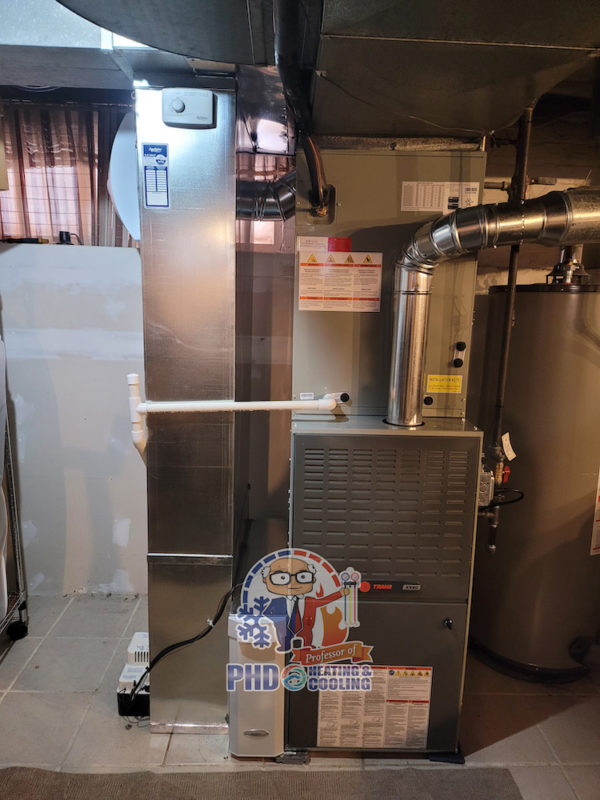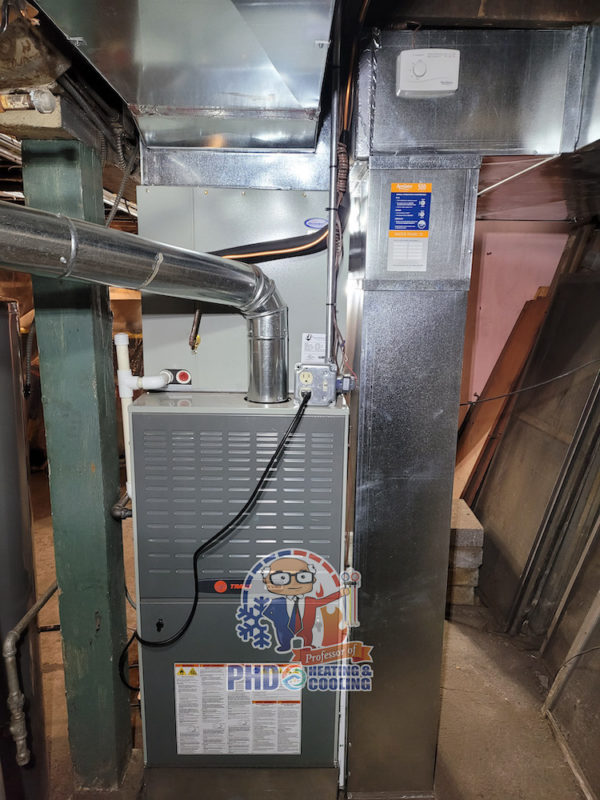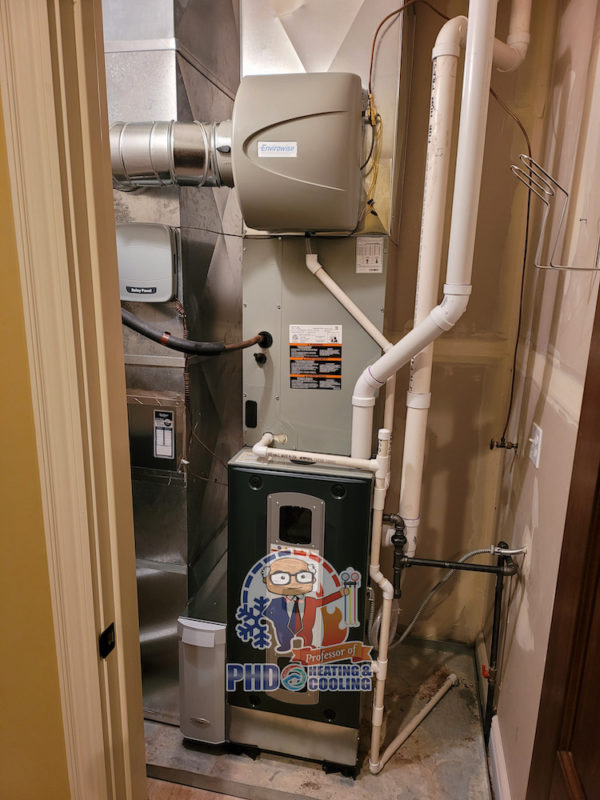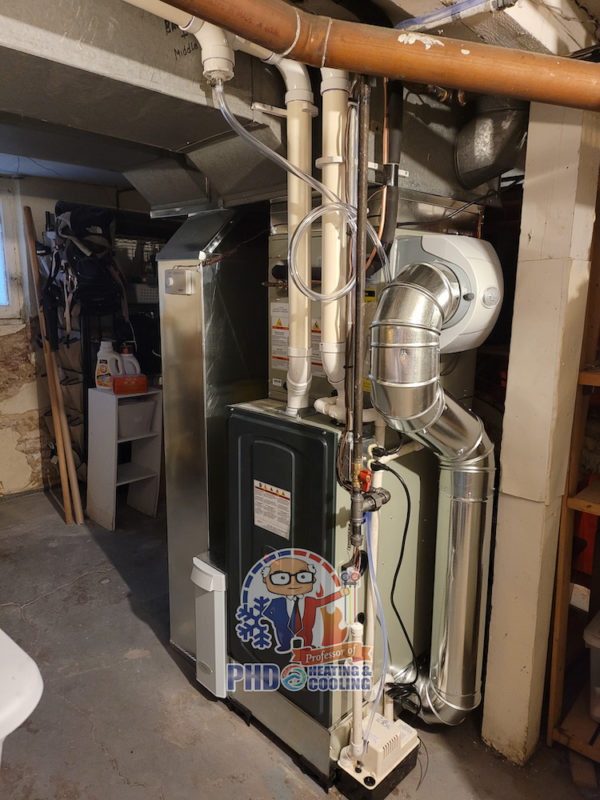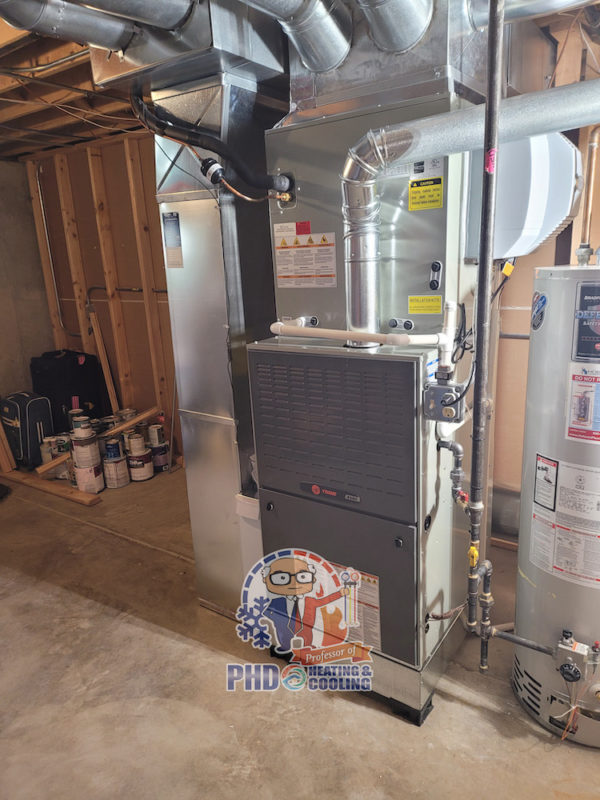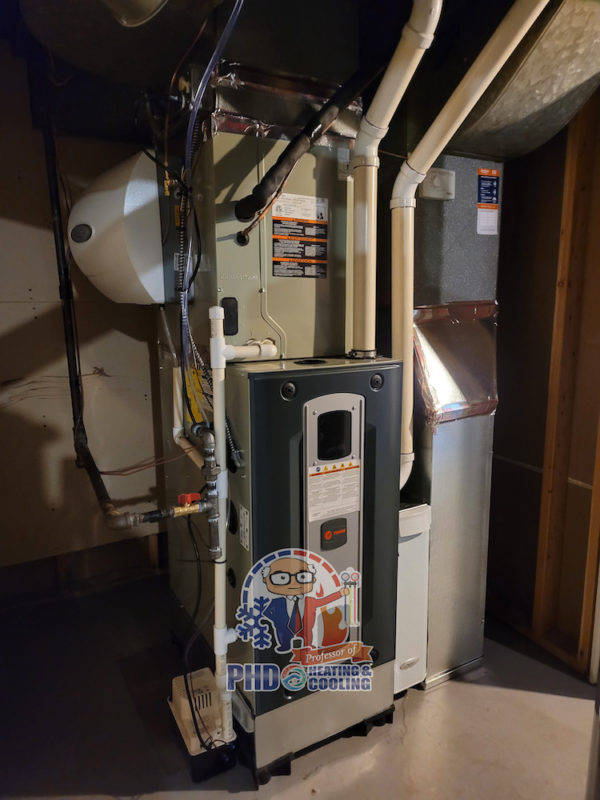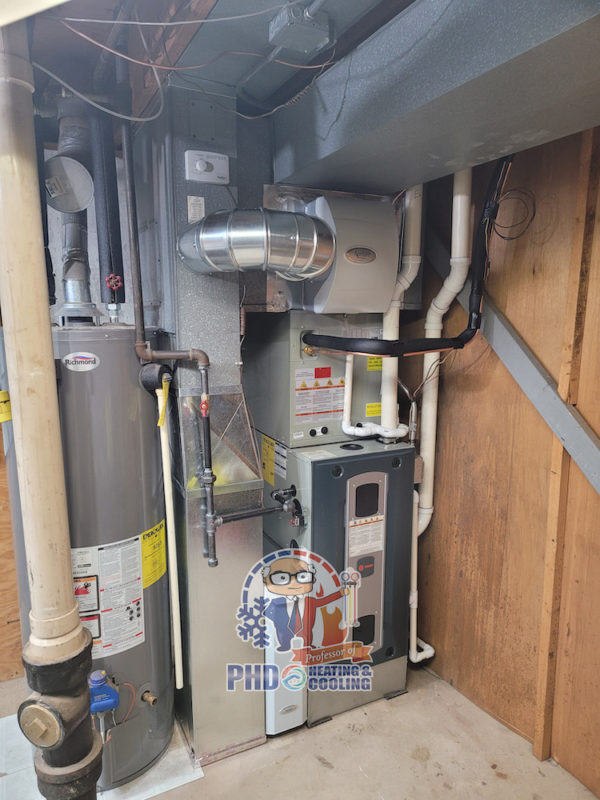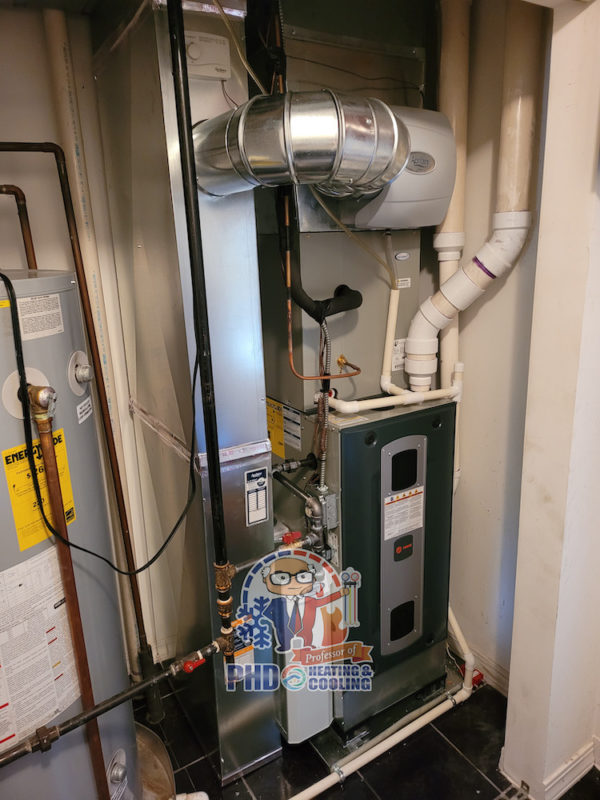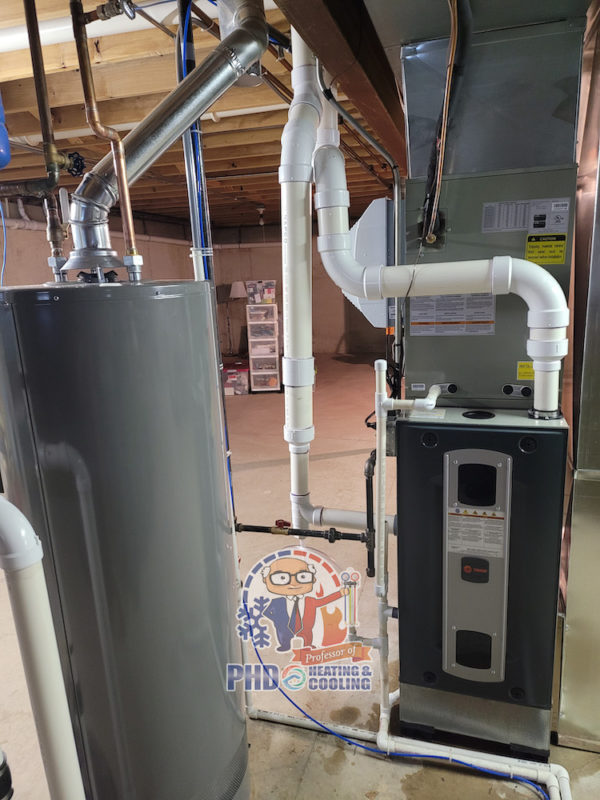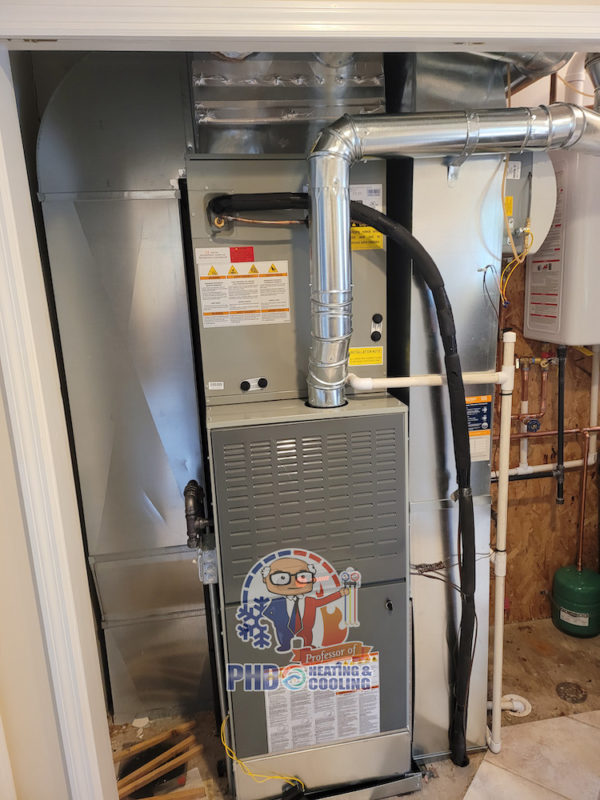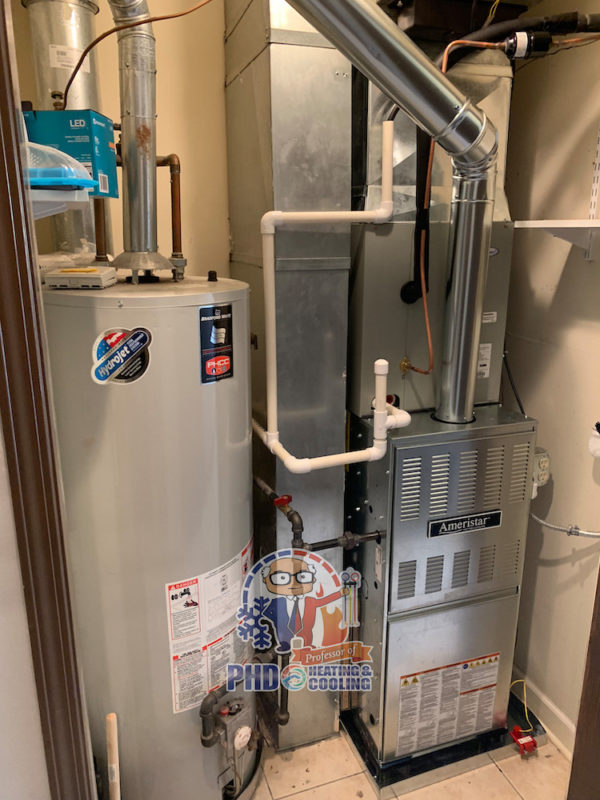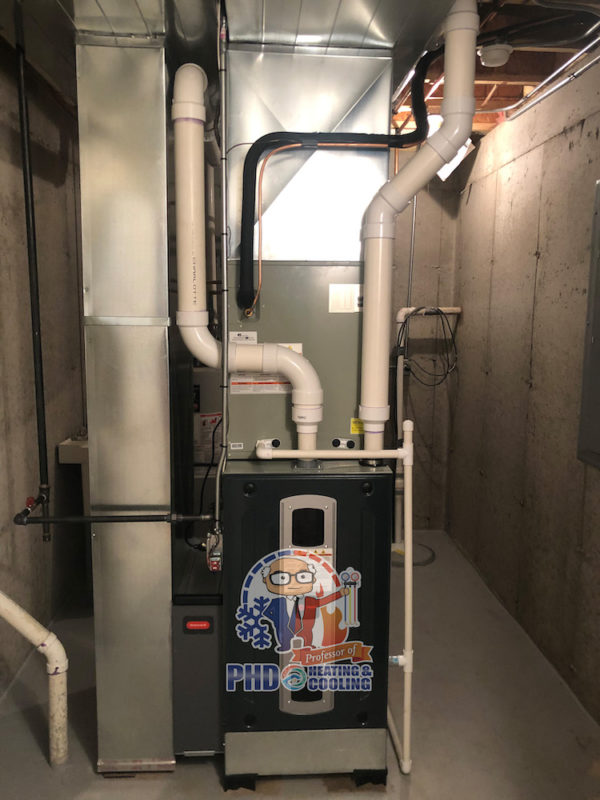A furnace and AC (Combo) combination continues to be the split system of choice each year for millions of homeowners replacing their old system. It makes sense to replace both units at the same time with a “matched” furnace and air conditioner designed to work together to deliver the energy efficiency and indoor comfort that matches your climate and/or budget requirements.
TOGETHER CHEAPER
When it comes to the replacement of home appliance the most expensive becomes the HVAC unit. You understand that you will buy a new one after all. But you want to give that appliance the last chance. But how would you know that day X comes? And why have you to replace it?
1. Ageing HVAC System
The period of service of a basic HVAC unit is between 10 and 15 years. But you can extend it with regular preventative maintenance through PHD Heating & Cooling. But if your unit is old, heating and cooling service couldn't work like it did when it was new. So the best choice, in that case, is a replacement.
2. Low Energy Efficiency
Modern units are more productive and efficient that the old ones. If you start to notice that energy bills are rising every summer, it is time to think about an HVAC unit replacement. A new energy-efficient system will save from 20% to 30% energy every month. Do you wish to save more money? You can ask a specialist to look at your ductwork. You will be surprised, but the basic HVAC system may loose from 20% to 30% of its energy to leaky ducts. The only way to save more energy and money is to repair cracks and seals in the ductwork.
3. R-22 Leak
Does your old unit need repair? But you don't want to pay too much? Some technical specialists may offer you to use Freon R-22. It is the most common coolant that has been using in air conditioners for many years. But it has a lot of disadvantages. First of all, the cost of R-22 was soared to $80-120 a pound. Secondly, it is a previous technology. HVAC manufacturers cancelled the production of units with R-22 in 2010. Furthermore, the production of R-22 itself will end in 2020. So we don't recommend using or repairing the unit with R-22. It's time to replace your HVAC system.
4. Your Home Has Changed
When a specialist chooses an HVAC unit for your house, he considers all aspects of the building to offer you the most effective system. If you decided to upgrade your home for being more energy-efficient, there is a risk that your existing system may be too powerful for your home. In that case, you may need an HVAC unit replacement.
5. Poor Air Quality
Do you know that your HVAC system not only provides ventilation, moving air throughout the home but affects humidity and filters allergens and other dangerous particles out of the air? Poor air quality may be the reason for asthma attacks, allergies and respiratory diseases. If you start to suffer from any of these respiratory issues remember, that it's time to replace your old HVAC unit. Excessive indoor humidity is also a sign for replacing your HVAC system.
6. Broken System
Do you need frequent repair or one major, but you don't have enough money? The most reasonable decision would be a replacement of an HVAC system that doesn’t work. There is no sense to wait! Just call PHD Heating & Cooling for a free HVAC system replacement quote.
7. Your furnace has reached “retirement age”
Furnaces live an average of 10-20 years, depending on if you had it professionally maintained or not. Age isn’t everything, though. The cost to keep the furnace running will give you more concrete reasons to replace or not.
8. Increased cost and frequency of furnace repairs
Like an old car, an old furnace that starts to have costly breakdowns is signaling that it’s near the end of its usable life and needs to be replaced soon (within the next 2 years or so). The question then becomes, “How expensive does a furnace repair need to be before it’s not worth it?” It depends on how old your furnace is and the cost to get a new furnace. A good rule of thumb is, no matter the age of the furnace, if the cost to repair is 40-50% of the cost of a new furnace, you should replace it. But for less expensive repairs, you should be less resistant to replacing the furnace the older it is. So if the furnace is 15-20 years old, and the cost to repair the furnace is only 10% of the cost of a new furnace, you should probably replace it (because it’s more likely to break down again soon).
9. Your heating bills have risen dramatically over the years
Even if your furnace has a few years left in it, it may not be cost efficient to keep it if your energy bills during the heating season are high due to the furnace’s horrible efficiency. With that in mind, you need to assess how much it’s costing you just to keep the current furnace you have versus how much you’ll save with a new furnace. Use this AFUE chart to do just that.
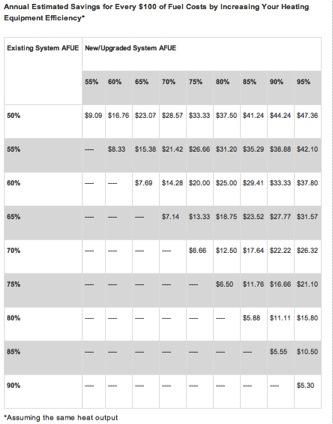
AFUE is a gas furnace’s efficiency rating, represented in a percentage. It stands for how much of the gas it uses to heat your home. So an 80% AFUE furnace uses 80% of the fuel to heat your home, the rest goes up the flue pipe—wasted. That means for every dollar you use to heat your home, 20 cents is wasted. This chart will show you how much you’ll save for every $100 you normally spend on heating by upgrading to a higher efficiency furnace. So if you’re upgrading from a 60% AFUE furnace to a super efficient 90% AFUE furnace, you’re saving $33.33 for every $100 you normally spend on heating. Find your last year’s heating bills and do the math. It’ll be crystal see how much you’ll save each year. The savings from a higher energy efficiency furnace may motivate you to replace your current furnace earlier than you expect.
10. The rooms throughout your home are different temperatures.
As a furnace gets older, it can become more and more inefficient until it loses the ability to distribute heat evenly throughout the house. As a result, some rooms can be colder than others.
11. Your home has soot around the registers.
A furnace register is a ventilation duct cover that can be opened and closed. Although the terms “register” and “grille” are used interchangeably, registers differ from furnace grilles due to possessing dampers which allow them to control the airflow within a duct. If you find soot (or dust/rust) around these areas within your home, then it means that your furnace has too much CO2. Difficulty keeping a clean house aside, this can cause excessive dryness which can damage furniture, flooring and plants. It can also cause itchy throats, dry eyes, as well as respiratory issues when inhaled. If you ever see a build-up of soot near your registers, it’s probably time to get a replacement.
12. Your furnace is extra noisy.
Furnaces can be kind of noisy, but if that noise gets louder over time, then you may want to consider a replacement. Possible telltale signs can come in the form of:
- Rattling: This can indicate unsecured ductwork, loose screws, sheet metal, or even the lower furnace motor not being properly balanced.
- Popping: This happens when parts inside of your furnace heat and cool in response to temperature changes.
- Humming: Your fan motor is probably going to make a bit of noise, but if it’s to the point of disruption, you might need a furnace blower motor replacement.
- Screeching/Squealing: If you hear these noises, you should probably assume your blower motor or inducer is damaged or worn out. It could also be caused by a loose bearing, deteriorating belt, or an issue with the pulley holding the belt.
Weigh the factors together
As you can see, none of these factors (age, cost to repair, energy efficiency) alone can tell you if you need to replace your furnace. They should be weighed together. To help you make the best choice possible, we encourage you to contact us and PHD Heating & Cooling will help you.
TOGETHER CHEAPER
Call us today at (312) 409-33-26 or contact us online to schedule a visit with one of our specialist.
Situations when your air conditioner and furnace needs a repair
1. Hot air is blowing
If you start to notice that hot air is blowing from your AC that may be a signal of a breakage. A refrigerant leak or a broken compressor may be the main reasons for it. Unfortunately, none of these two breakages can fix. The simplest and the cheapest way is to buy a new AC.
2. Moisture near your AC
Do you start to notice moisture or leaks around your air conditioner? It is a sign of a problem in your system. It may be a minor issue or a serious problem, e.g. a blocking of the drain tube. That is not critical, but it will be better to fix it to avoid creating an environment for mold growth. Important: liquid can indicate a refrigerant leak and it is more serious.3. Strange sounds
You have to remember that the normal air conditioner run very quietly. If you start to hear grinding, squealing, grating, or other loud sounds it is a sign that your AC is defective. PHD Heating & Cooling Experts will fix the system of your AC or replace the unit entirely.
4. Strange smells
If you start to feel a strong, pungent smell, the reason may be in the wire insulation in the system. Musty bad smells are the sign of mold. As you know, mold puts your family’s health at risk.
5. High humidity levels
Do you start to notice a sticky feeling to the air inside your house or water on windows? It is a sign that your AC isn’t working properly. The best decision, in that case, is to call to PHD Heating & Cooling Experts. They can troubleshoot the causes and fix the problem in record time. Problems can be detected in any of the major components of the system:
- Refrigerant
- Compressor
- Condenser
- Expansion valve
- Evaporator coil
Of course, they don't forget to check the "brain" of your AC - the thermostat, because it can also be an issue at times.
6. Gas Furnace Produces No Heat or Not Enough Heat
Come fall and winter, it is imperative that your furnace is working properly and producing enough heat to warm your home. If your furnace stops producing heat or is blowing cool air, there are a number of possible culprits, starting with your thermostat. PHD Heating & Cooling help you fix this problem before you freeze.
Call us today at (312) 409-33-26 or contact us online to schedule a visit with one of our specialist.
7. Gas Furnace Powers on and off Too Frequently
Cut down on energy costs and prevent damage to your furnace by addressing a gas furnace that's overactive or short cycling. Besides the need for consistently comfortable temperatures, this issue could cause long-term safety issues to your home, making it very important to address. From a faulty thermostat to a dirty filter, there are several possible causes to investigate.
8. Gas Furnace Blower Does Not Turn Off
Possible Causes:
• Thermostat set to fan continuously
• Faulty fan limit control switch on furnace
9. Gas Furnace Has Noisy Operation
Don't let a noisy furnace in your home drive you crazy. From a low-pitched humming to a high-pitched squealing to a loud banging, different sounds mean different problems. PHD Heating & Cooling help you fix the problem.
10. Furnace Pilot Is Out/Relighting a Standing Pilot
A pilot light can go out due to a strong draft, dirty orifice, or dirt in the gas tube. Luckily, relighting your pilot light is fairly simple. The thermocouple may also be faulty and shutting off the gas supply. If this is the case, the problem is a bit more involved and may require you to replace your thermocouple. PHD Heating & Cooling help you fix the problem.
11. Electronic Ignition Furnace Problems
Newer furnaces do not rely on a standing pilot to ignite the gas burners. Electronic ignition occurs typically in one of two ways: intermittent pilot or hot surface ignition.The intermittent pilot system uses an electronically controlled high voltage electrical spark to ignite the gas pilot and, subsequently, the main burners when the thermostat calls for heat.The hot surface ignition system uses an electronically controlled resistance heating element, not unlike a light bulb filament, to ignite the gas burner. PHD Heating & Cooling help you fix the problem.
12. Mismatching the Furnace and Thermostat
Furnaces and thermostats are not mix-and-match appliances. Using the wrong type of thermostat with a furnace will cause operating problems and can be dangerous. Although thermostats look similar, they are designed very differently. There are numerous types of heating systems and thermostat systems and they need to be coordinated for safe and proper operation. There are three types of thermostat systems used today: millivoltage, low voltage, and line voltage.
Call us today at (312) 409-33-26 or contact us online to schedule a visit with one of our specialist.
It is necessary to service your air conditioning every summer. It is easy to organize if you choose our company. Our specialist doesn't only expect but service your AC. That simple procedure helps you to save your time and money because prevention is always cheaper than a replacement or new AC.
You rely on your furnace to keep your home comfortably warm when the nights get chilly, which is just one of the reasons why an annual furnace inspection from a knowledgeable HVAC pro is so important. A professional furnace inspection also provides a number of other key benefits.
• When your furnace is properly maintained, it operates efficiently, which reduces fuel and energy waste and lowers your annual heating costs. An annual tune-up by a qualified and experienced technician can help extend the life of your heating equipment by preventing unnecessary damage to vital system components.
• During a routine maintenance visit, your HVAC specialist can identify and address small problems before they progress into more serious issues that require costly repairs or replacements.
• Regular maintenance can help prevent safety issues, such as the risk of fire, and the dangers posed by unhealthy gas fumes, and lethal carbon monoxide leaks.
What will our specialist do?
- Give an overall inspection of the unit.
- Looking for any signs of trouble.
- Check the refrigerant.
- Test the voltage.
- Examine the drainage lines.
- Inspect belts, vents and ducts.
- Lubricate any ports.
Our technical inspector will check the "heart" of AC - the motor. You may be surprised but a motor that is drawing too many amps is going to stop working soon. If our specialist will find the problem, so it is necessary to adjust or replace a thermostat. Don't forget to check the air filter every month. PHD Heating & Cooling technician will do it as part of the servicing, like as cleaning the condenser, compressor, air handler, drainage line, etc. The final stage of maintenance is testing refrigerant levels and observing AC working.
The steps performed during a routine furnace inspection can vary and you can expect that an experienced professional will include the following tasks:
• Checking the vent system for leaks or blockages.
• Examining the heat exchanger for signs of corrosion and cracks or separations. A damaged heat exchanger can allow deadly carbon monoxide to escape.
• Checking the blower and cleaning its components. This includes removing the blower wheel to ensure that it’s free of dirt and debris. Testing for a tight seal on the blower access door.
• Checking the air intake grills for blockages.
• Performing an amp-draw test on the blower motor and comparing the results to the unit’s listed specifications. This can reduce the risk of fire, and help extend the life of the blower components.
• Checking the burner for proper ignition and testing the flame sensor for accurate operation.
• Lubricating all the motor’s moving parts to reduce friction. When there’s friction, the motor has to work harder, which requires more electricity, and it could also result in a premature failure.
• Checking that all electrical connections are tight and examining the wiring for signs of rust and corrosion.
• Testing the thermostat calibration. When the thermostat is calibrated correctly, your home will be more comfortable. It can also save you money on your energy bills by preventing overheating.
• Examining the flue for obstructions. If the toxic fumes that result from combustion can’t escape up the flue due to a blockage, your indoor air quality will suffer.
• Testing for the unit’s safety controls. This should include checking the high limit control, which prevents the furnace from overheating and reduces the risk of fire.
• Checking the belts for signs of wear or cracks.
• Testing that the system’s startup cycle is functioning correctly. Checking the furnace’s air filter. A dirty filter can reduce the unit’s efficiency by restricting needed air flow, and damage vital system components over time.
Call us today at (312) 409-33-26 or contact us online to schedule a visit with one of our specialist.
Schedule service / Get my free quote
Fast, reliable, and quality results. Contact us for a free quote today.

